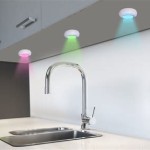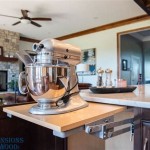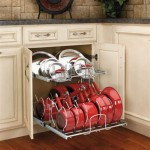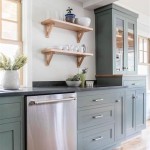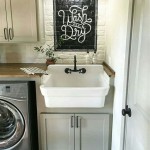All-In-One Paint for Cabinets: Streamlining Your Renovation
Cabinet painting is a popular and cost-effective way to revitalize a kitchen or bathroom without undertaking a full remodel. Selecting the right paint is crucial for achieving a durable, attractive, and long-lasting finish. All-in-one paints for cabinets have emerged as a convenient solution, promising to combine the functions of a primer, paint, and sealant into a single product. This article will explore the benefits, drawbacks, and considerations involved in using all-in-one paints for cabinet projects.
Traditional cabinet painting typically involves several steps: cleaning, sanding, priming, applying multiple coats of paint, and sealing. Each of these steps requires specific products and drying times, adding to the overall project duration and complexity. The appeal of all-in-one paints lies in their potential to reduce these steps, saving time, effort, and potentially reducing the overall cost of the project. These paints are formulated to adhere directly to clean, and sometimes lightly sanded, surfaces, eliminating the need for a separate primer. They also offer a durable finish designed to withstand the wear and tear cabinets endure, theoretically negating the need for a topcoat sealant.
The chemistry behind all-in-one paints often involves advanced acrylic or alkyd formulations. These formulations aim for a superior level of adhesion, flow, and leveling, which are essential for achieving a smooth and professional-looking finish on cabinet doors and frames. The inclusion of resin systems contributes to the paint's durability, resistance to chipping, and ease of cleaning. Furthermore, many all-in-one paints incorporate UV inhibitors to protect against fading and discoloration caused by sunlight. Understanding these properties is valuable when evaluating the suitability of a particular all-in-one paint for a given cabinet project.
Understanding the Benefits of All-In-One Paints
The primary advantage of using an all-in-one paint for cabinets is the simplification of the painting process. By combining multiple steps into one, the time required to complete the project can be significantly reduced. This is particularly beneficial for DIY homeowners who may be less experienced with painting or have limited time to dedicate to the project. Fewer products also mean less mess and cleanup, further simplifying the process.
Cost savings can also be a significant benefit. While all-in-one paints may have a higher initial cost per gallon compared to standard paints, the elimination of primer and sealant purchases can offset this cost, especially for larger projects. Furthermore, the reduced labor time associated with fewer steps can translate into cost savings for those hiring professional painters.
The ease of application is another key advantage. All-in-one paints are often formulated to be self-leveling, meaning they flow smoothly and minimize brush strokes or roller marks. This can result in a more professional-looking finish, even for novice painters. Many all-in-one paints are also available in a wide range of colors and sheens, providing ample design flexibility.
Addressing the Drawbacks and Limitations
Despite the advantages, all-in-one paints are not without their limitations. One potential drawback is the requirement for thorough surface preparation. While these paints are designed to adhere directly to surfaces, they still require proper cleaning and degreasing to ensure optimal adhesion. In some instances, light sanding may still be necessary, particularly on glossy or previously painted surfaces.
Another limitation is the potential for lower performance compared to using separate primer, paint, and sealant products. While all-in-one paints aim to provide comparable protection and durability, they may not always achieve the same level of performance as a multi-step system. This is particularly true in high-traffic areas or environments with high humidity or moisture exposure.
Certain cabinet materials may also not be suitable for all-in-one paints. Laminate cabinets, for example, can be challenging to paint, even with all-in-one products specifically designed for such surfaces. In these cases, specialized primers may still be necessary to ensure proper adhesion. Similarly, cabinets with existing peeling or damaged finishes may require more extensive preparation than all-in-one paints can effectively address.
Key Considerations When Choosing All-In-One Paint
When selecting an all-in-one paint for cabinets, several factors should be considered. First, it's crucial to assess the existing condition of the cabinets. Are they made of wood, laminate, or metal? Are they in good condition, or do they have peeling paint, grease stains, or other imperfections? The answers to these questions will help determine the appropriate level of surface preparation required and the suitability of different paint formulations.
Next, the desired finish and durability should be considered. What sheen level is desired? Will the cabinets be exposed to high levels of moisture or wear and tear? Different all-in-one paints offer varying levels of durability and resistance to scuffs, stains, and moisture. Reading product reviews and comparing specifications can help inform this decision.
Finally, it's important to factor in the application method and user experience. Some all-in-one paints are better suited for brushing, while others are designed for spraying. The chosen application method will depend on the painter's skill level, equipment availability, and the desired finish. Additionally, factors such as drying time, odor, and ease of cleanup should be considered.
Proper surface preparation is paramount, even when using an all-in-one paint. This typically involves cleaning the cabinets thoroughly with a degreasing cleaner to remove any dirt, grease, or grime. If the existing finish is glossy or smooth, light sanding may be necessary to create a better surface for the paint to adhere to. Any holes or imperfections should be filled with wood filler and sanded smooth before painting.
Application techniques for all-in-one paints are similar to those used for traditional cabinet paints. Using a high-quality brush or roller designed for smooth surfaces is recommended. Applying thin, even coats of paint is essential to avoid drips, runs, and brush strokes. Allowing each coat to dry completely before applying the next is also crucial for achieving a durable and professional-looking finish. For spraying applications, proper ventilation and safety precautions should be observed.
Maintenance is another important aspect to consider. While all-in-one paints are designed to be durable, they still require regular cleaning to maintain their appearance. Mild soap and water are typically sufficient for cleaning painted cabinets. Avoid using harsh chemicals or abrasive cleaners, which can damage the finish. Promptly wipe up any spills or stains to prevent them from setting in. Touching up any chips or scratches as they occur will help prolong the life of the painted cabinets.
Alternatives to all-in-one paints include traditional multi-step systems involving separate primer, paint, and sealant products. While these systems require more time and effort, they may offer superior durability and performance in certain applications. Another alternative is to consider professional cabinet refinishing services, which can provide a high-quality finish with minimal effort on the homeowner's part. The choice between these options will depend on individual budget, skill level, and desired outcome.
In conclusion, all-in-one paints for cabinets offer a convenient and time-saving solution for revitalizing kitchen and bathroom spaces. By combining the functions of primer, paint, and sealant, these products can simplify the painting process and reduce the overall project cost. However, it is important to carefully consider the limitations of all-in-one paints and ensure that proper surface preparation and application techniques are followed. Evaluating the existing condition of the cabinets, the desired finish and durability, and the application method will help in selecting the most suitable all-in-one paint for a given project.

All In One Paint Transformation Watch The Magic Unfold Youtube

2 Quart Cabinet Bundle

All In One Paint By Heirloom Traditions 2 Quart Deluxe Cabinet Bundle And Kit Bone Off White

Saltwater Cabinets

All In One Paint Bone Off White 8 Fl Oz Sample Durable Cabinet And Furniture Built Primer Top Coat No Sanding Needed

Nantucket Beyond Paint All In One 473ml 946ml Online

All In One Paint Spruce Gray Green 32 Fl Oz Quart Durable Cabinet And Furniture Built Primer Top Coat No Sanding Needed

Cabinet Redo Featuring Heirloom Traditions All In One Paint Before After Kitchen With Pricing

Painting Laminate Cabinets Using All In One Paint Color London Bathroom Vanity

Polo Dark Navy Heirloom Traditions All In One Paint Painting Cabinets Leather



